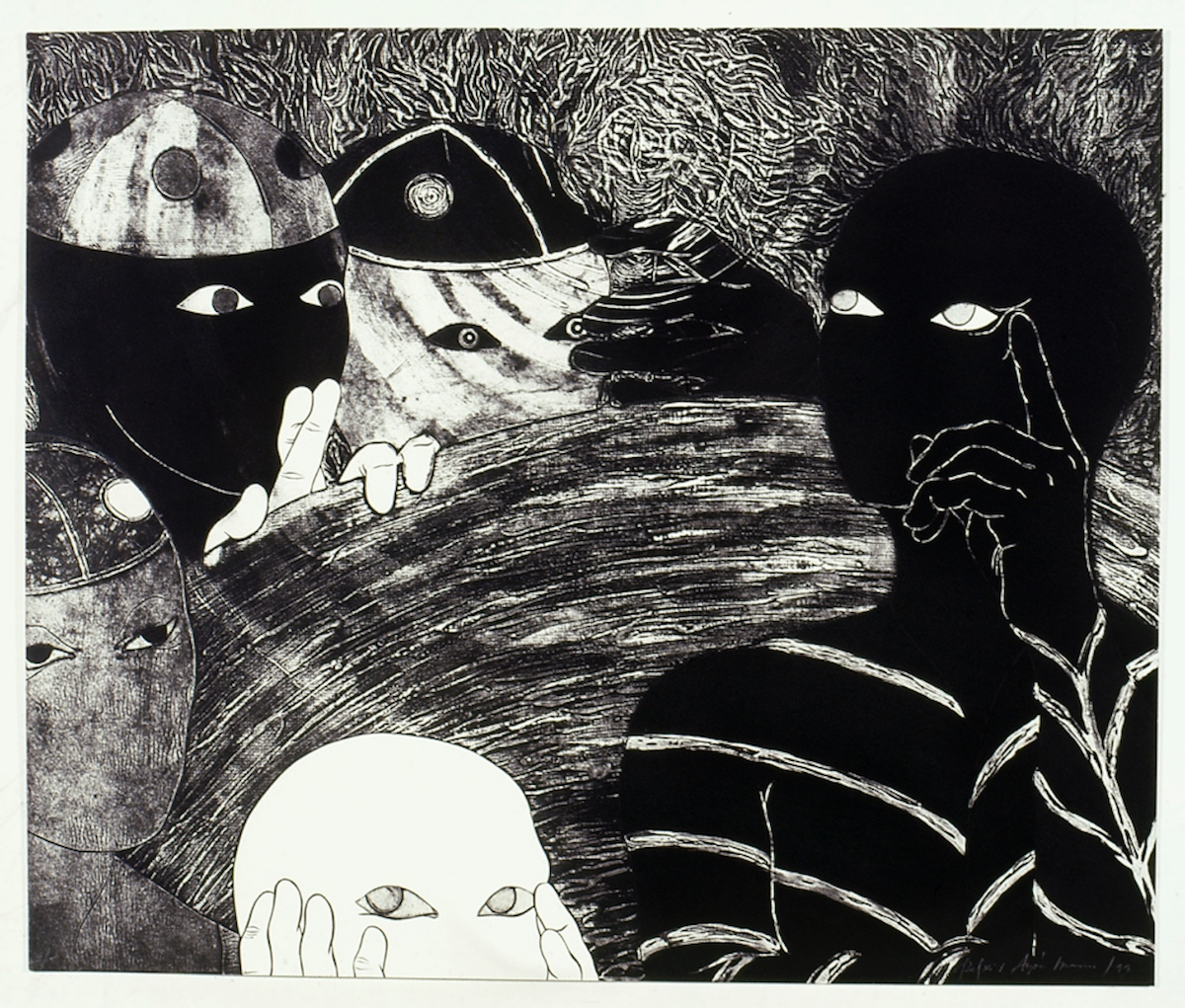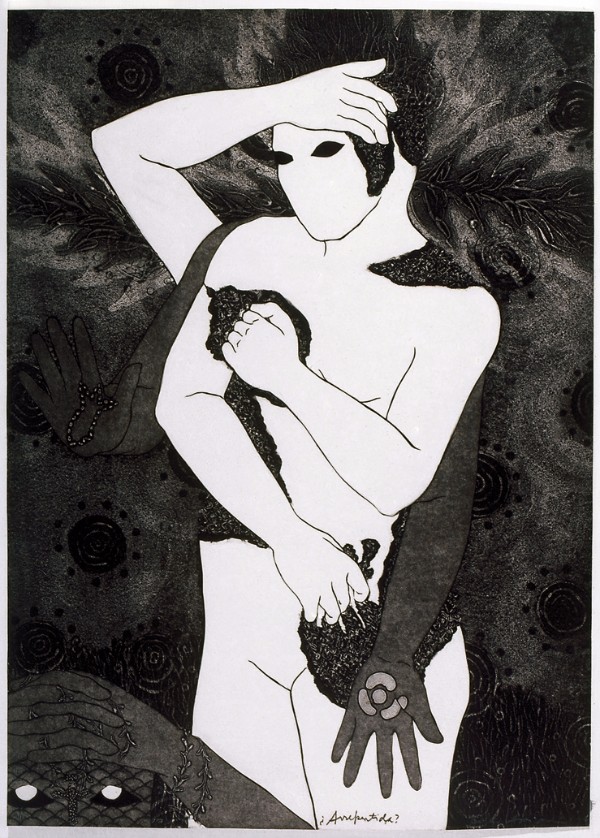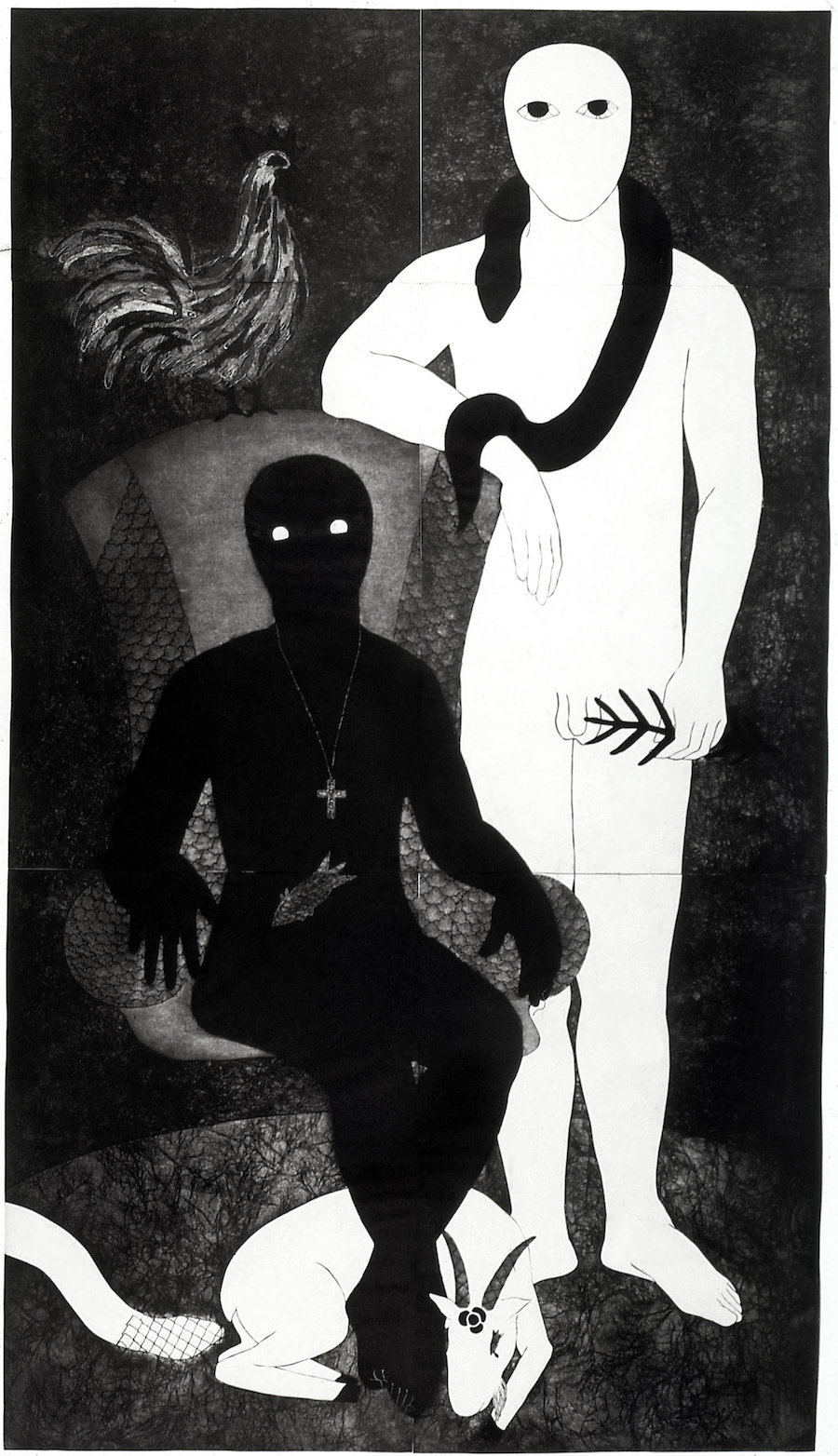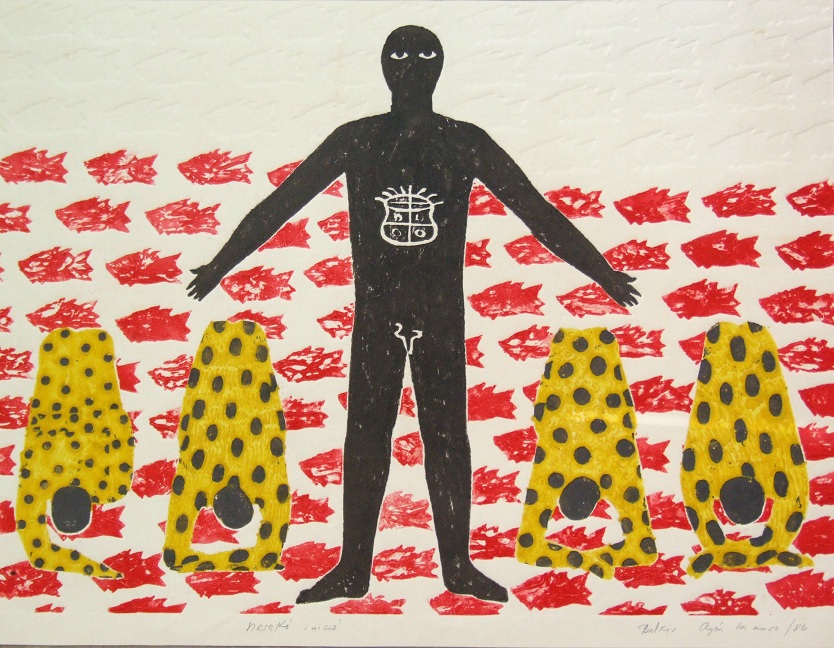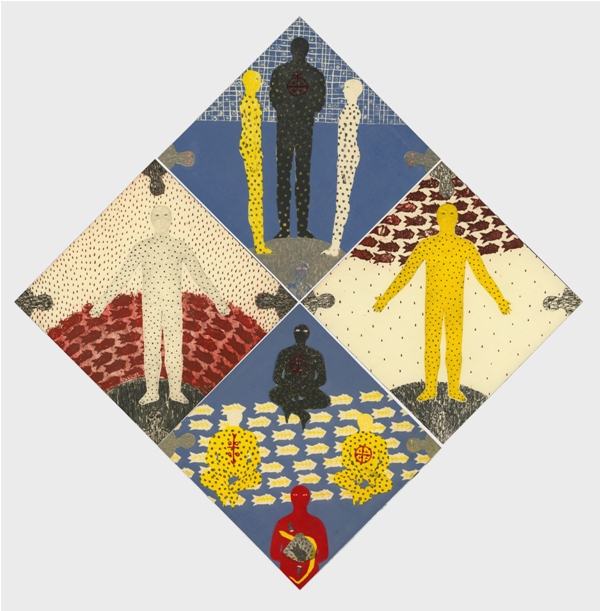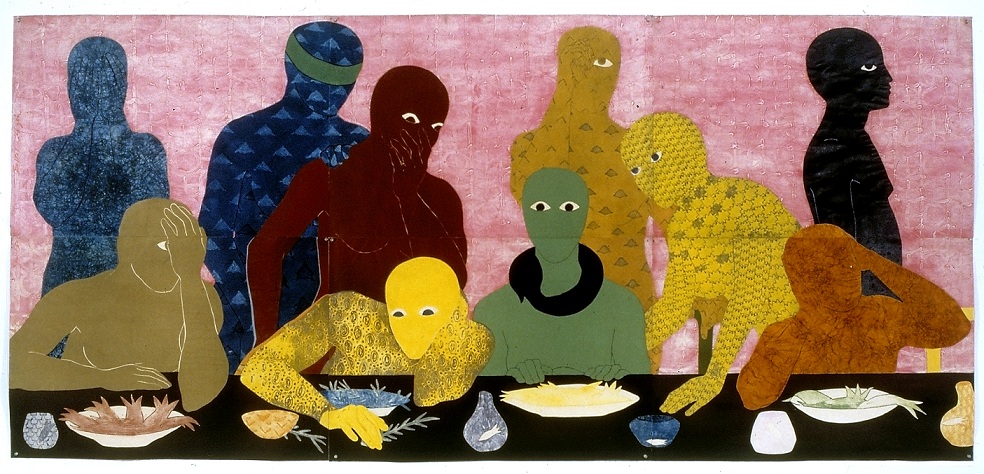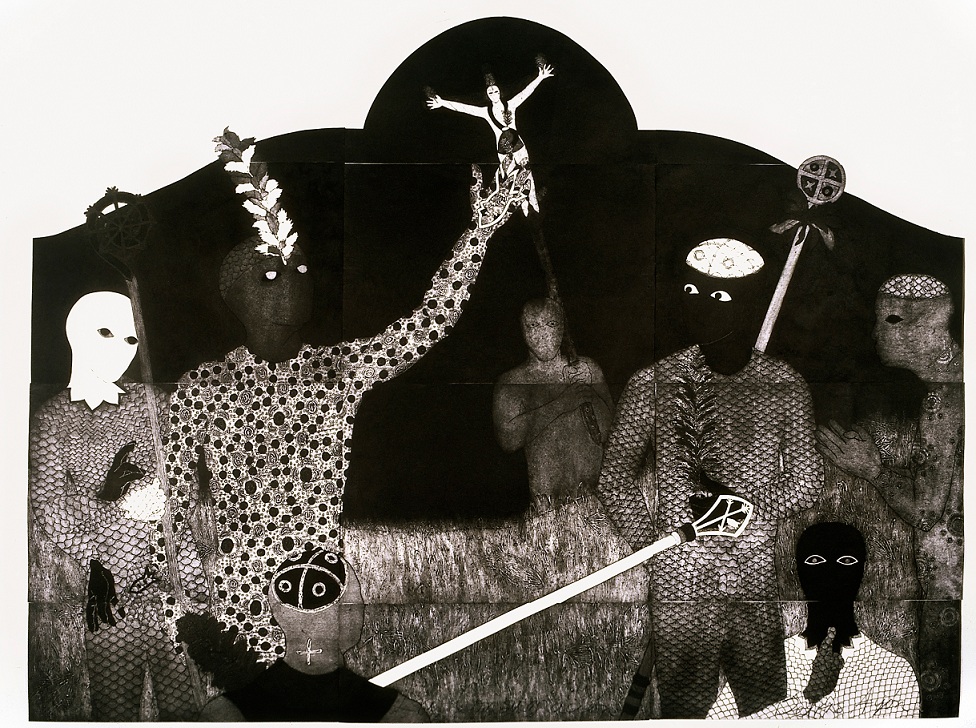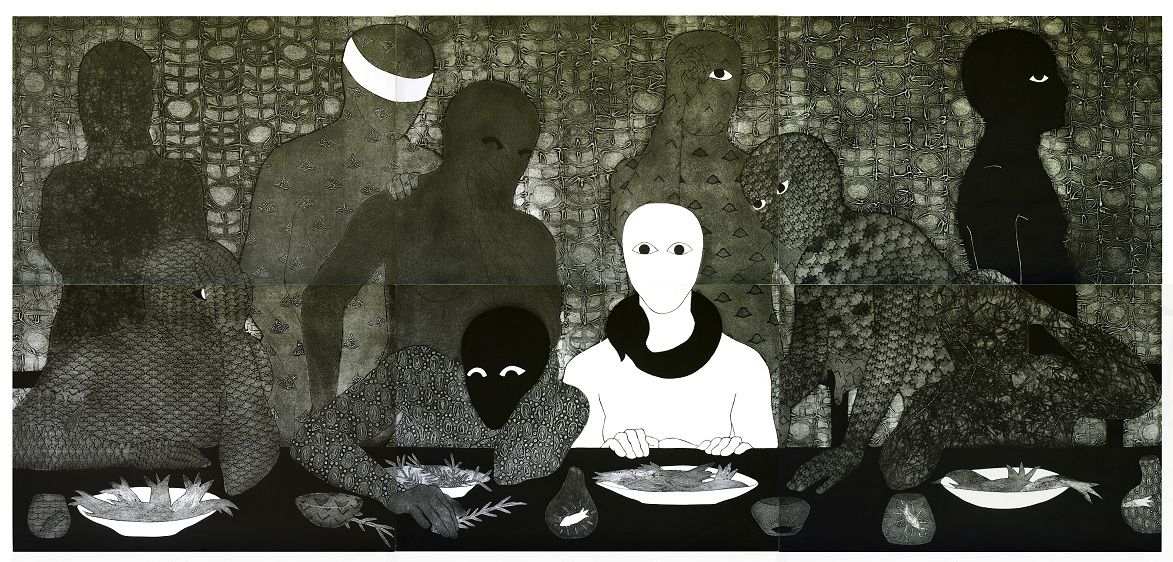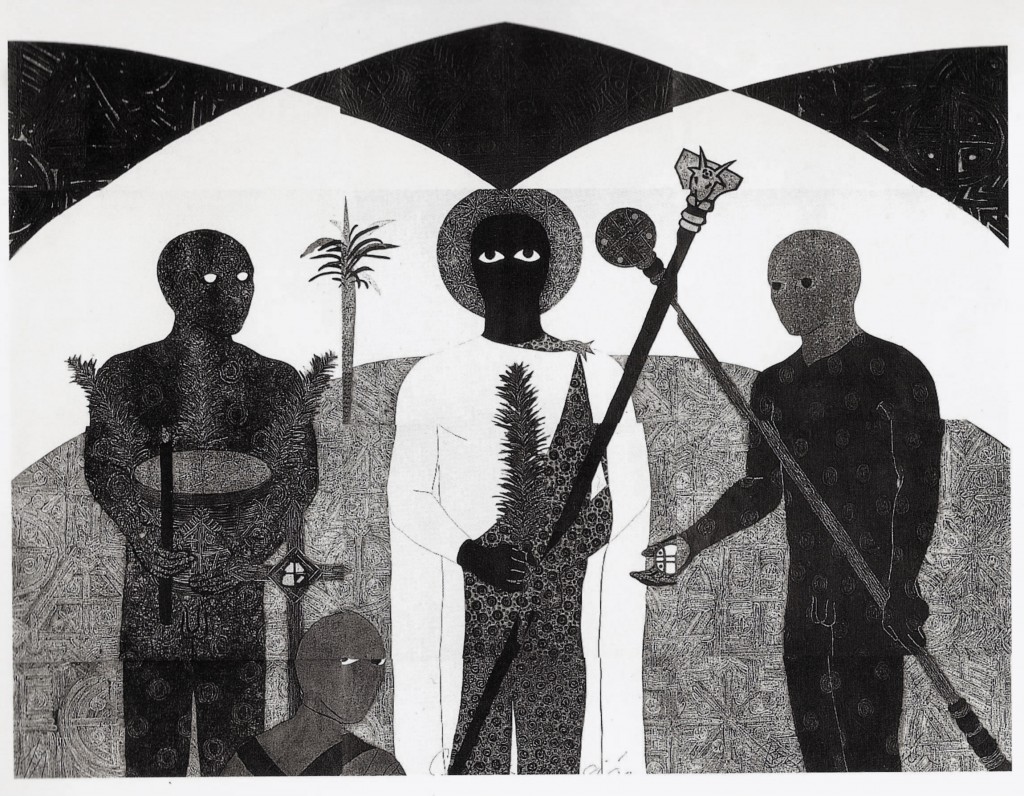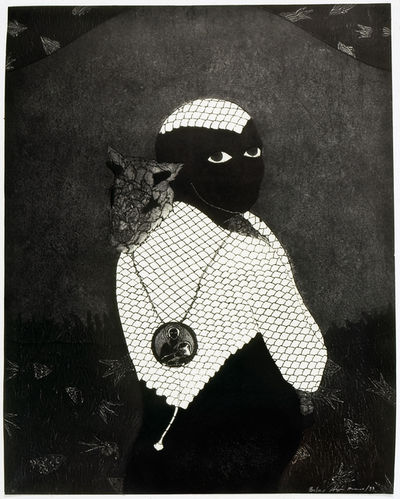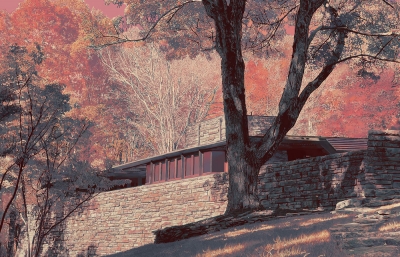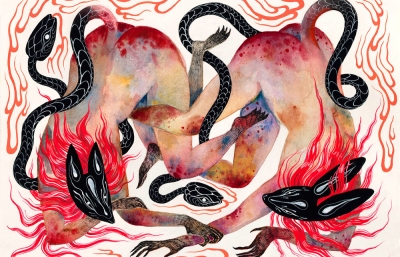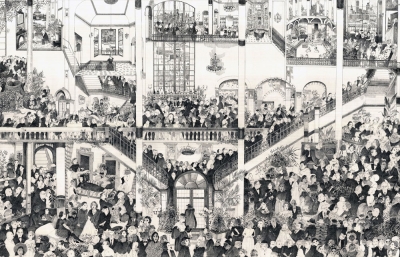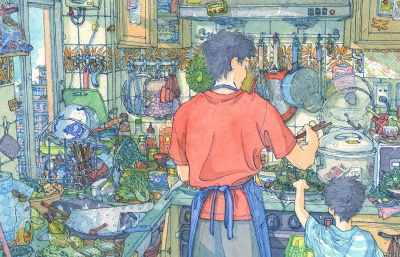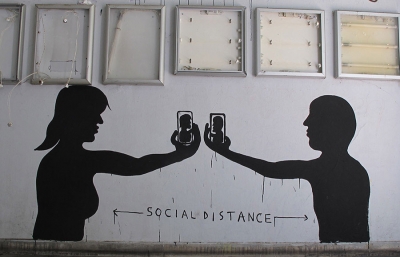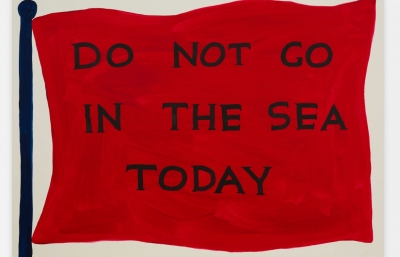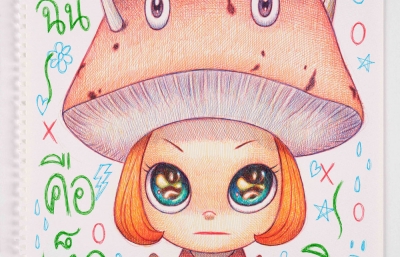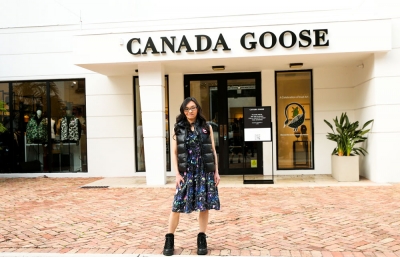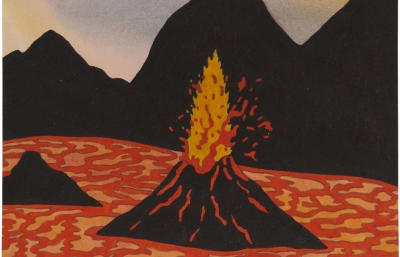The late Cuban artist, Belkis Ayón, was a printmaker known for her highly-detailed, allegorical collagraphy. Ayón focused her collagraphy on Abakuá; a secret, all-male Afro-Cuban religious society. Though Ayón took her own life in 1999, her legacy survives through the silent, yet vigilant figures she depicts in her work.
Belkis Ayón was born in Cuba in 1967 and found a love for art by the age of 12. She studied at the Instituto Superior de Arte in Havana, Cuba, where she later joined as a faculty member. After exhibiting her works across Cuba, Ayón had been noticed and she was invited to show at the Venice Biennale in 1993. Soon after, Ayón was invited to display her work at other venues across the US and Europe.
She specialized in the technique of collagraphy, in which she created a shadow-world of mysterious-yet-powerful characters traversing secret societies. Often working in black-and-white, Ayón creates scenes of ghost-white figures with oblong heads and empty, almond-shaped eyes that are set against dark-patterned backgrounds. These scenes reflect Ayón's curiosity about the Abakuá secret society, which fundamentally banned women from its initiation.
Since her death, Ayón's work has been held by her family's estate with several works displayed in an exhibition, NKame: A Retrospective of Cuban Printmaker Belkis Ayón.

